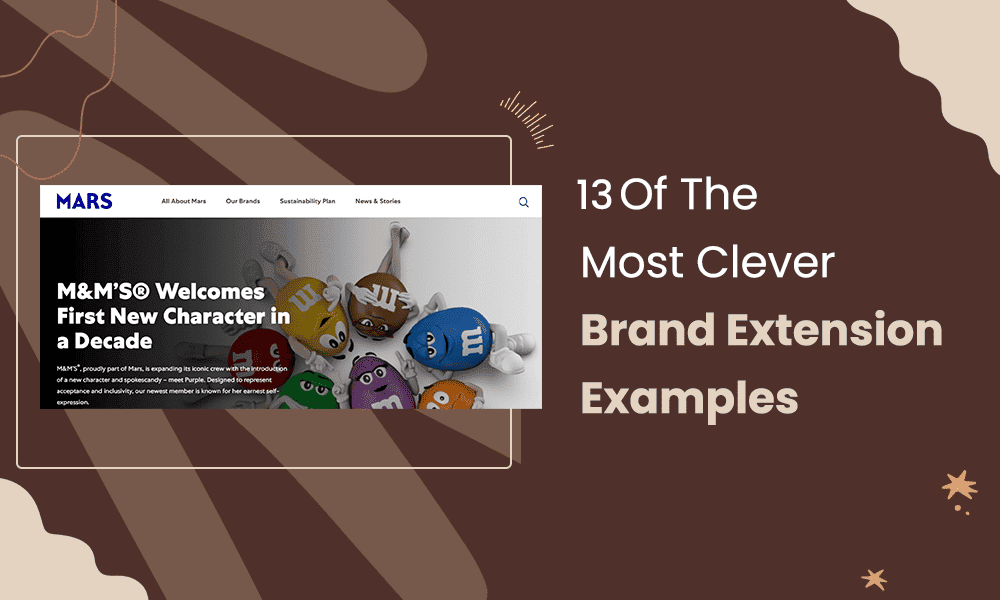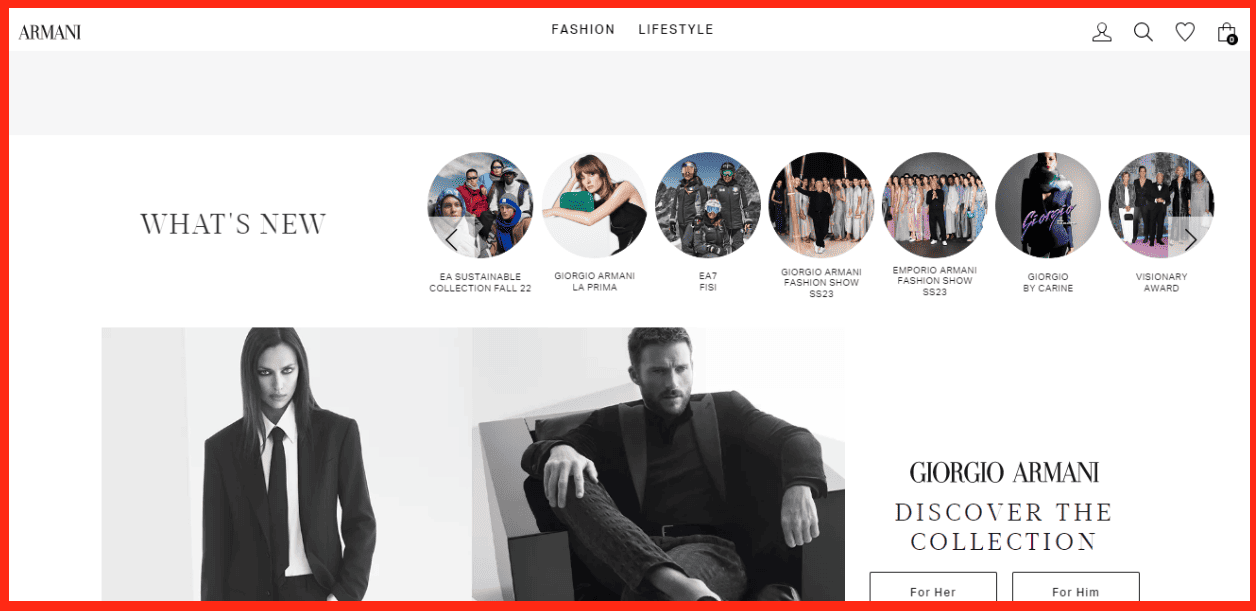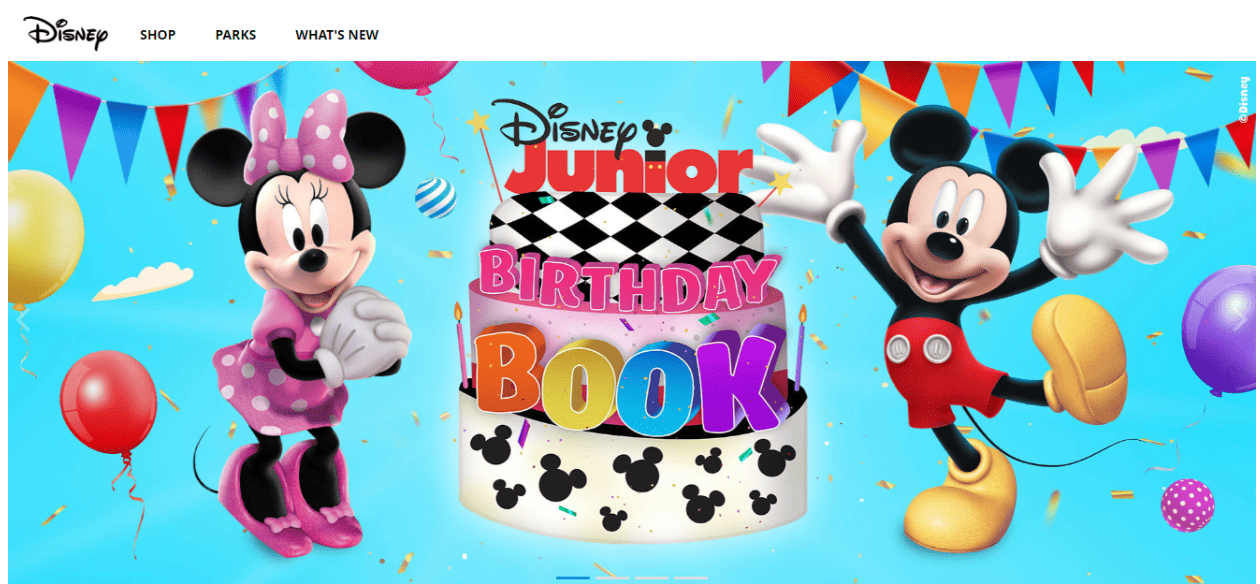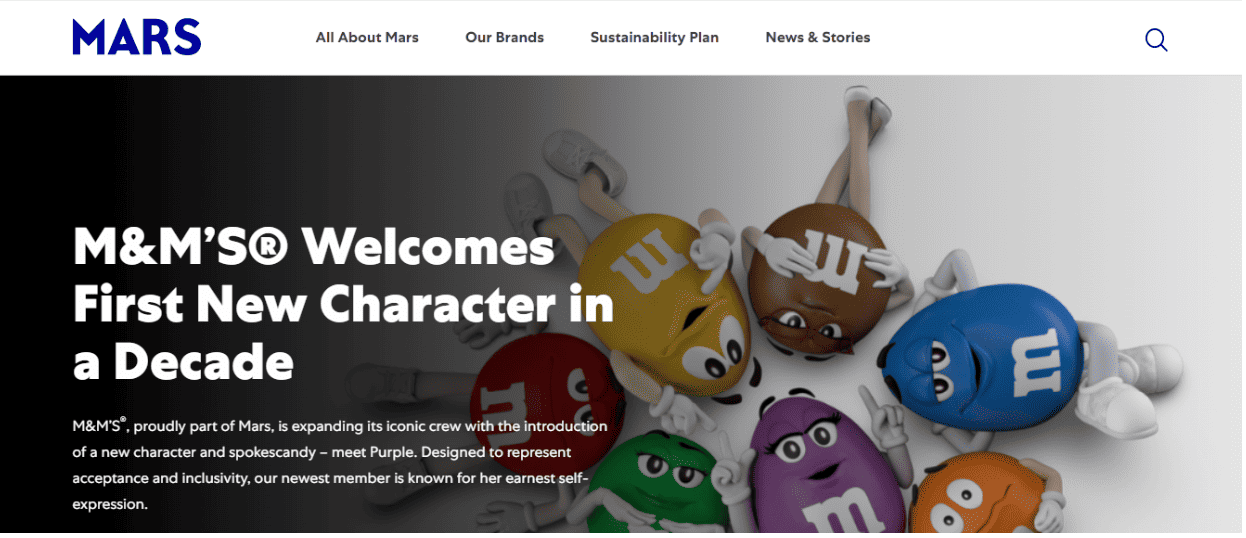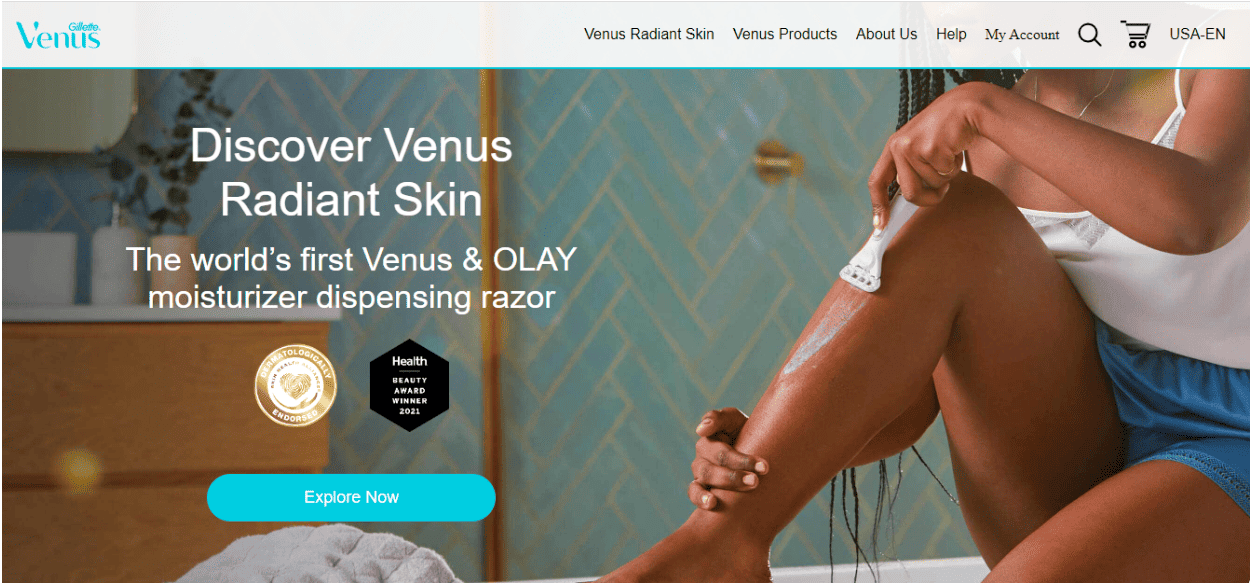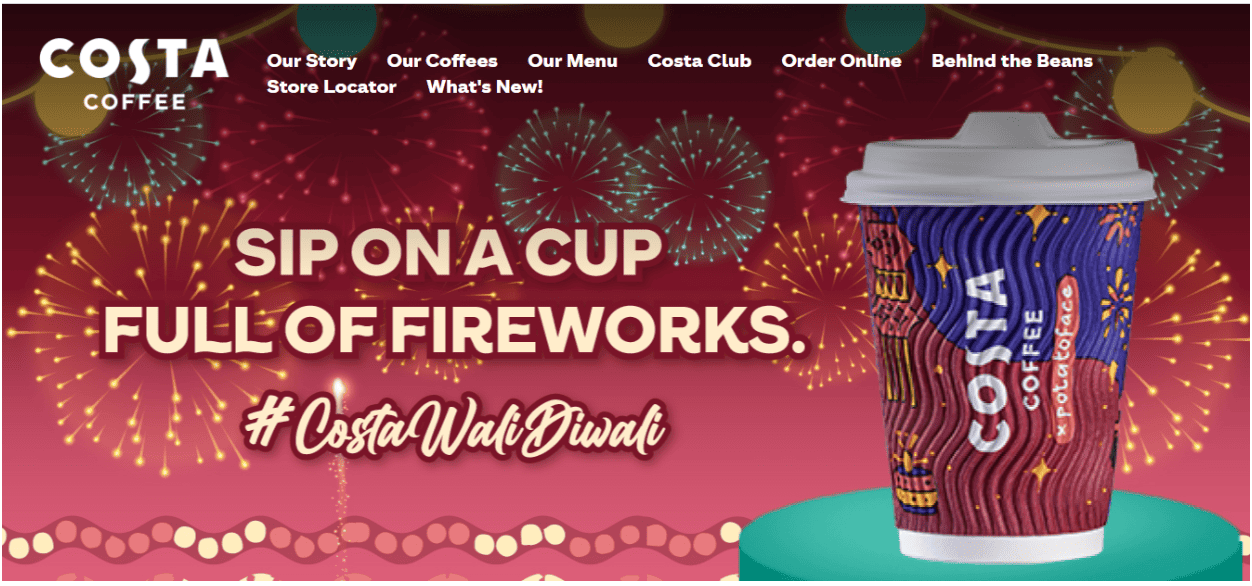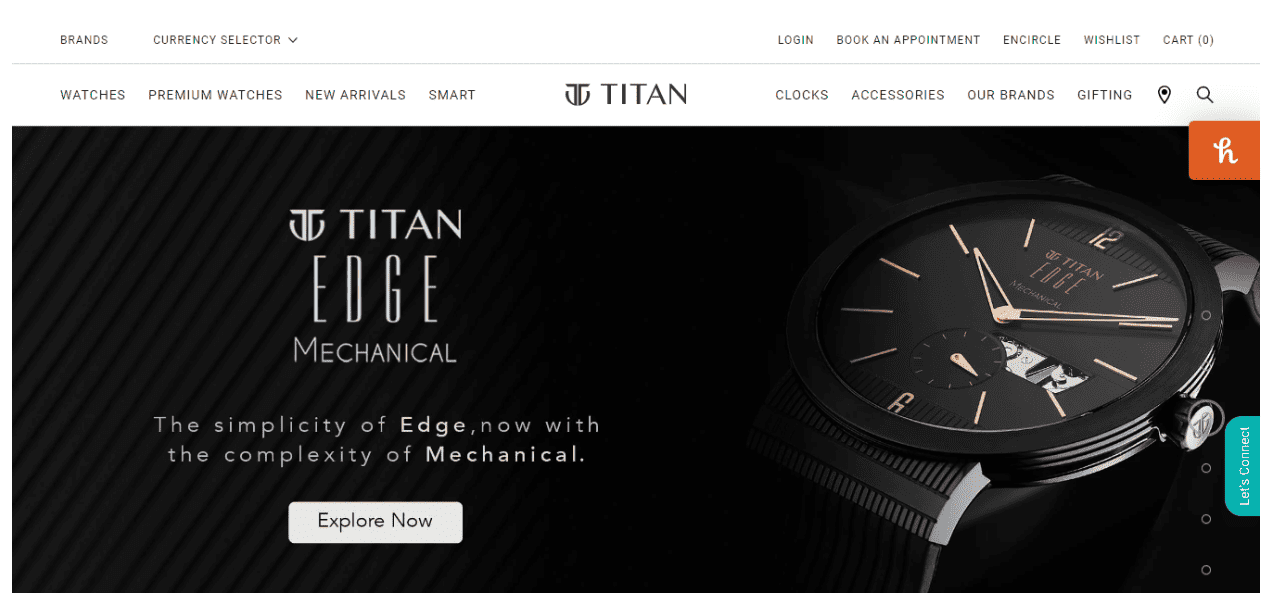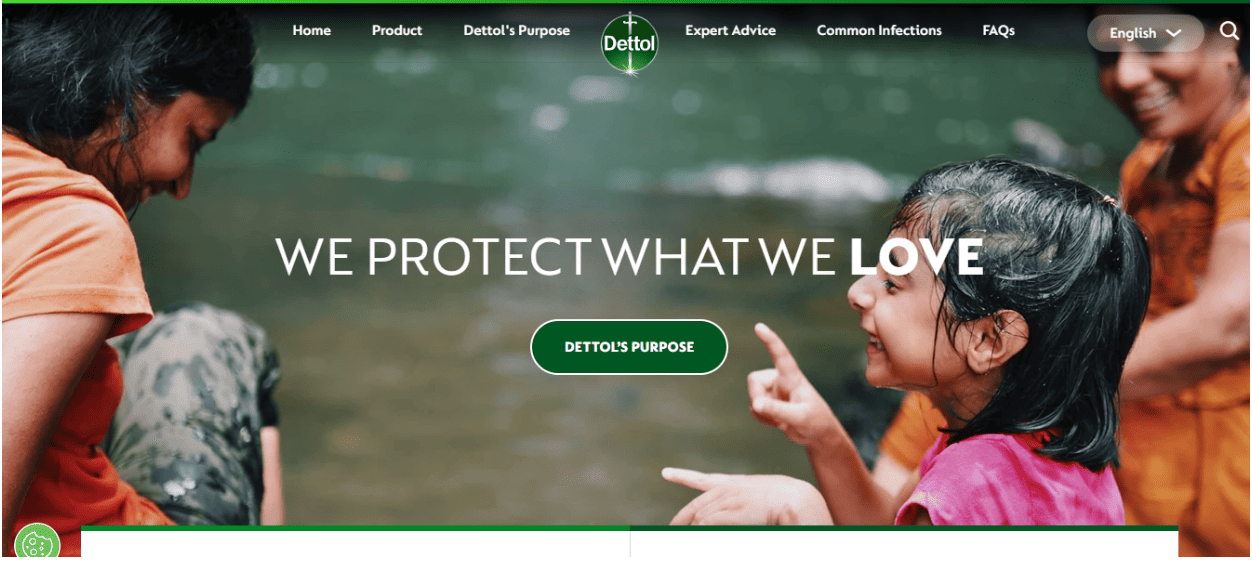Dove is a well-known hair and skincare brand that is popular for manufacturing women’s skincare items like soap, body washes, bars, etc. While initially catered toward women, it introduced a range of products for men under the name ‘Dove Men+Care’ in 2010.
Since the company was already involved in skincare products, launching a men’s product category transformed Dove into a multi-billion dollar giant.
This is a classic brand extension example – businesses leverage their brand awareness and authority to expand their clientele and open new sales channels.
In this blog post, you will learn more about brand extension and see a few clever examples to learn how you can do it, too. We’ve also shared some poor examples of brand extension and why those campaigns didn’t work.
Table of Contents
What Is Brand Extension?
Brand extension is a marketing strategy wherein a company creates a new product category under its brand name.
Typically, brand extensions are used by well-established organizations to launch a new product or product category for their customer base.
When the newly launched product category is related to the company’s parent category, it helps brands earn greater profits, reduce costs involved in launching a new business, and meet customers’ needs.
Types of Brand Extensions
Let us take a look at the different types of brand extension strategies.
1. Product line extension
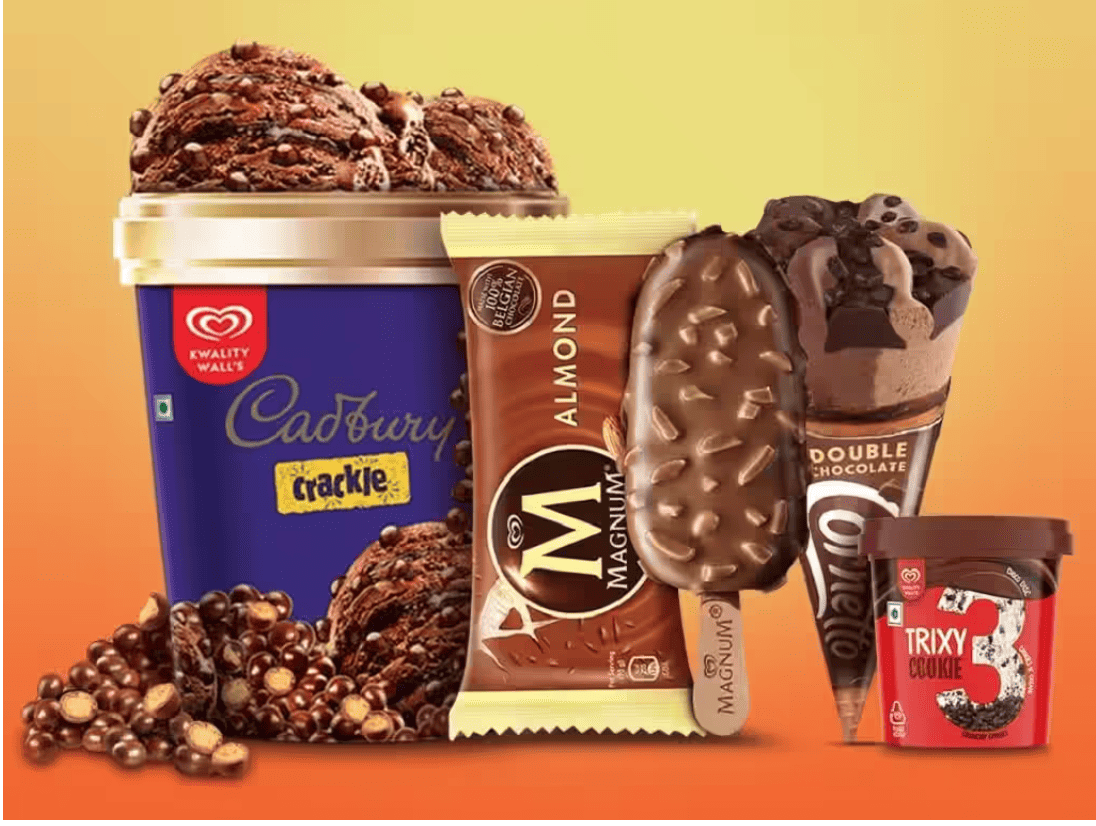
A line extension is a form of brand extension when a parent company or brand launches a new product line that is similar to or adjacent to the existing category of products.
As a result, companies don’t have to create a new product line and can expand their customer base by adding to their already existing product categories.
An example of line extension is when an ice cream brand introduces new flavors to its existing lineup.
Other examples include adding new scents, colors, and sizes to a product line.
When does a product line extension work?
- When there is strong customer demand for new product variations.
- When the customers have strong brand loyalty.
- When the new product is closely related to your existing products.
2. Complementary product extension
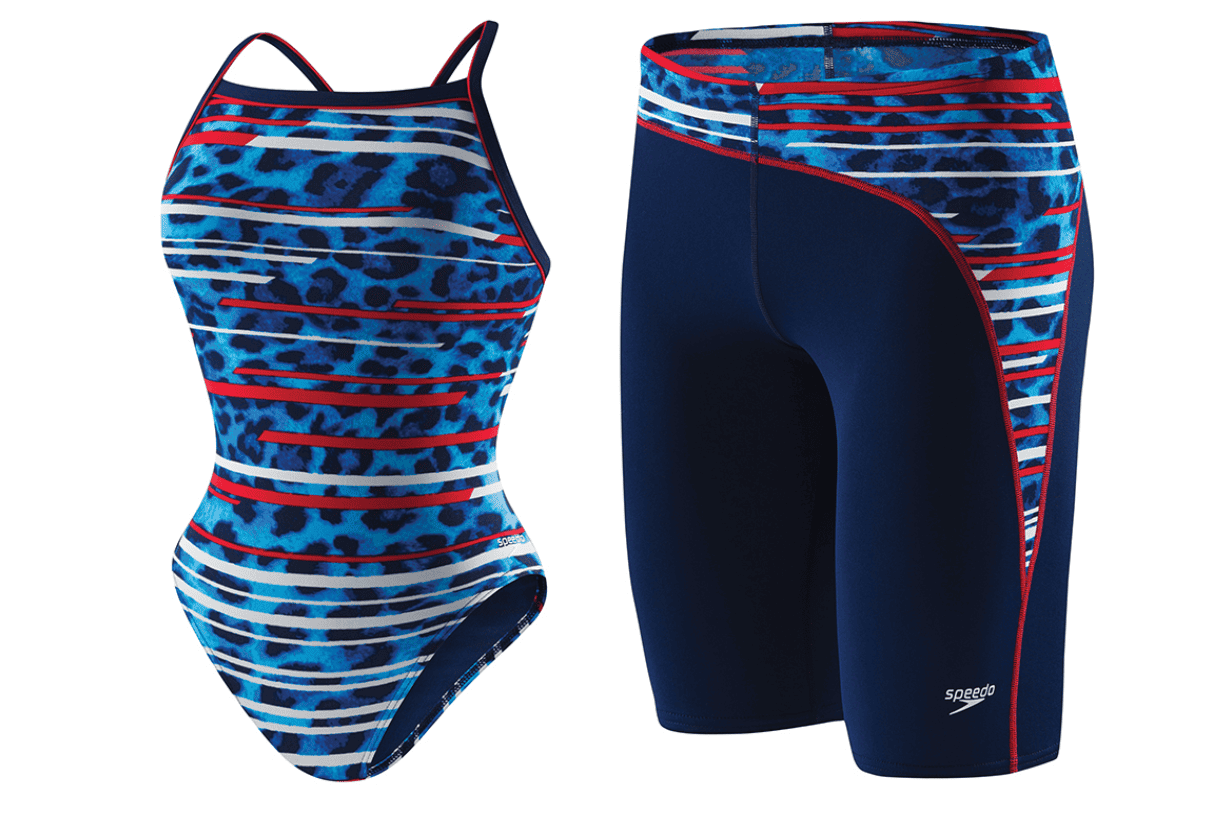
In complementary product extensions, brands add products that complement their existing range of products. Effective brand positioning can make sure that these complementary products fit the brand’s image and delight the customers. For instance, sports brands sell cricket bats and balls together as complementary goods.
Or, activewear brands selling swimsuits with head caps, which boosts sales.
An example of a complementary product extension is Speedo, a well-known swimwear brand. Speedo sells swimsuits as well as complementary wear, including swimming goggles, swim caps, and bathing suits.
When does a complementary product extension work?
- When the new product naturally pairs with existing products.
- When customers often buy complementary products together.
- When the new product fits the brand’s image and customer expectations.
Read also: The ‘Bread and Butter’ of Complementary Products
3. Customer base extension
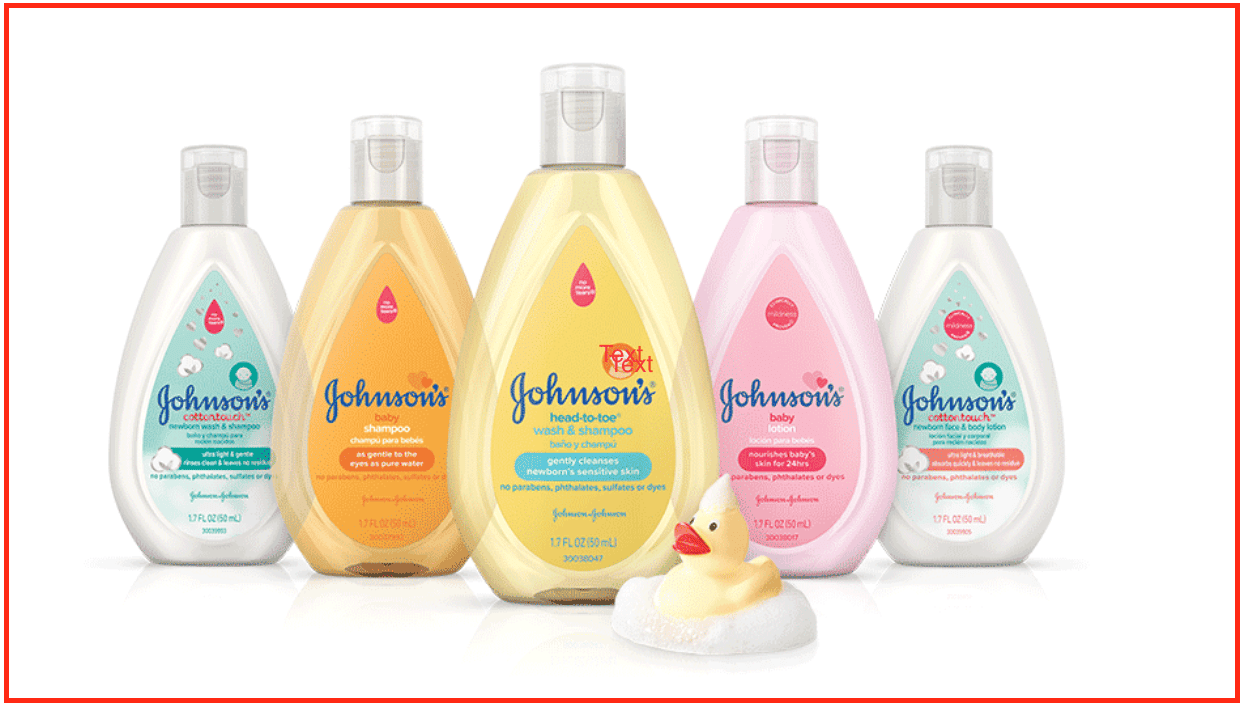
Although brands mainly extend their product line by adding new goods to the same category, some do so by targeting a specific demographic. This brand strategy is known as customer base extension.
For example, Johnson and Johnson, a company that sells pharmaceutical and consumer packaged products, extended its brand to sell goods that specifically cater to infants. Known as Johnson’s Baby, the brand sells baby wipes, baby powder, baby shampoo, hair oil, and so on.
When does a customer base extension work?
- When the brand can identify new needs within its existing customer base.
- When the new products fit well with what the brand already sells.
- When the brand can use its good reputation to promote the new products.
Read also: Understanding the 4 Key Steps to Brand Development: A Brief Guide
4. Company authority extension

Brands that use company authority extensions usually have high authority in their field or industry. As a result, they are able to create and invest in diverse products and services.
The Tata Group is a good example of an organization that applies for company authority extension. The company has invested in multiple sectors, including consultancy, automobiles, aviation, jewelry, apparel, hospitality, and so on.
When does a company authority extension work?
- When the brand has high credibility in its industry.
- When the brand has resources to invest in multiple sectors.
- When the brand’s reputation draws customers to new products and services.
5. Brand lifestyle extension
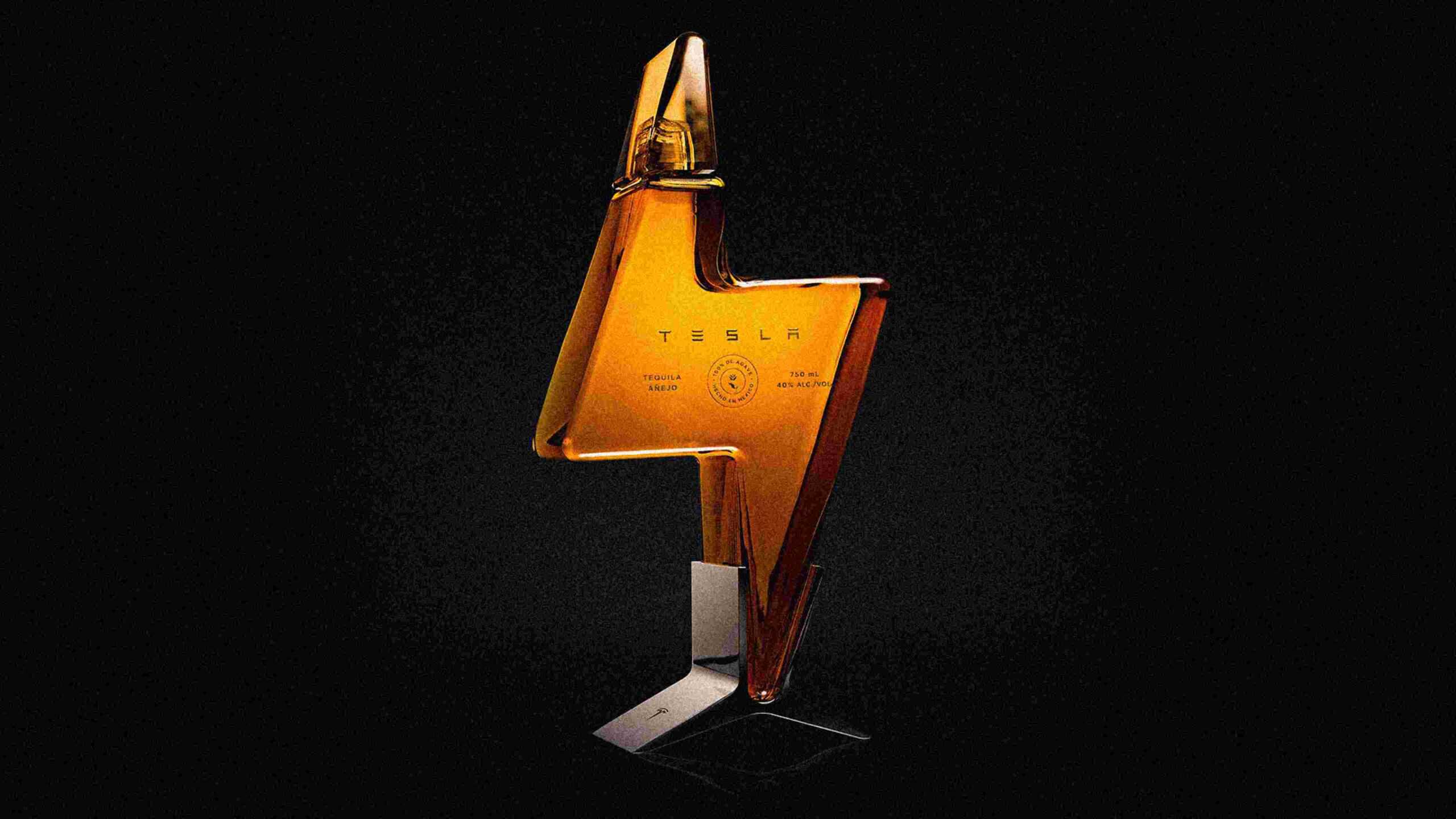
With a brand lifestyle extension, companies aim to create a culture or community around their brand. This marketing strategy lets you use your brand community and offer them new products even if they are not related to the main product(s) of the original brand.
Typically, organizations use celebrity endorsements or influencer marketing to promote their products.
An example of a brand lifestyle extension is that of Tesla, an American automotive and clean energy company. It introduced a tequila line, and the company sold out its tequila within a few hours.
When does a brand lifestyle extension work?
- When the brand has a strong and engaged community.
- When the new products evoke curiosity and excitement among the brand’s followers.
- When marketing strategies like celebrity endorsements or influencer marketing are effectively used.
6. Derivative extensions
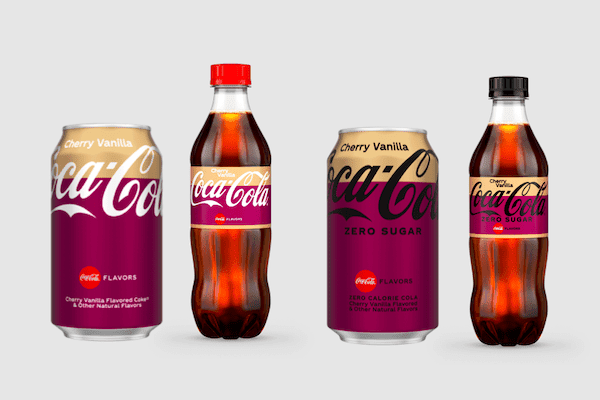
In a derivative brand extension, a brand creates new products that are variations or enhancements (‘derivatives’) of its existing products. This approach allows the brand to expand its offerings while maintaining its core identity.
For example, Coca-Cola introduced new flavors such as Cherry Coke and Vanilla Coke (and even mixed them both for the Cherry Vanilla flavor).
When does a derivative extension work?
- When the new product variations excite and attract existing customers.
- When the brand can innovate while staying true to its core identity.
- When the new products offer a delightful twist on beloved favorites.
7. Co-branding

Co-branding is a brand extension strategy where two or more brands collaborate to create a new product that has common features from each brand. This strategy cleverly uses the strengths and customer bases of both brands to create a unique offering.
For example, Nike and Apple teamed up to create the Nike+ product line. Nike brought its sports gear know-how, and Apple added its tech skills to the mix. Together, they made products like Apple Watch Nike+ and Nike+ iPod Sport Kit that track and boost your athletic performance.
When does a co-branding extension work?
- When the collaboration generates buzz and excitement among customers.
- When the new product offers exciting features that make the customers eager to try it out.
- When the partnership introduces each brand to new customer bases.
8. Licensing

Licensing brand extension happens when a brand lets another company use its name, logo, or other brand elements on products that the original brand doesn’t usually make. This strategy helps the brand reach new markets and rake in extra cash without having to produce new products themselves.
Take Disney, for example. They license their beloved characters to different companies to make merchandise like toys, clothing, and accessories. This way, Disney gets to spread its magic even further and cash in on its popular characters without having to deal with the manufacturing process.
When does licensing work?
- When the brand enters into a new market through partnerships.
- When there is a clear customer demand for specific products or merchandise.
- When brands want to profit from merchandise without taking up the hassle of manufacturing.
Read also: 14 Examples of Small Business Branding (Achieve Similar Results)
9. Corporate branding
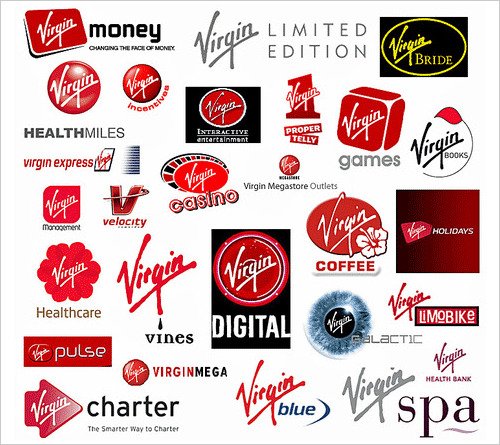
Corporate branding extension is when a company uses its well-known corporate brand name to launch new products in different categories. This strategy leverages the company’s overall reputation to build trust and recognition for its new offerings.
For example, Virgin Group uses corporate branding to extend their name across various industries, including airlines (Virgin Atlantic), music (Virgin Records), and over 60+ businesses and industries which even includes space travel!
Fun fact: This is also an example of brand stretching, where a company uses its well-known brand name to launch new products in different and often unrelated categories.
When does corporate branding work?
- When the brand has the capital to drive expansion and innovation.
- When the brand name instantly builds trust and interest in new products and services.
- When the brand’s reputation and reach open doors to new markets.
Do You Understand What Strategic Selling Means? It Is Not What You Think
10. Transfer of components

Transfer of components brand extension is when a brand reuses “transfers” its successful features/qualities from one product and uses them in another product. This helps win customer trust for new products, as they encounter something familiar.
For example, Apple uses the same processor technology from its Mac computers in its iPad Pro tablets. Customers who trust the performance of Mac computers are more likely to trust the iPad Pro for similar high performance.
When does a transfer of components work?
- When familiar features make new products more trustworthy.
- When proven technology/features promise to deliver the same high performance in new products.
- When consistent quality across products has strengthened the brand identity.
Vertical vs Horizontal Brand Extension
You can expand your brand in two main ways: vertical or horizontal brand extension. Let’s see what they are.
Vertical brand extension
A vertical brand extension stays within the same product category but introduces options at different price and quality levels, which can either be higher-end or more affordable.
For example, Starbucks offers a range of coffee products, from premium Reserve blends to more affordable, everyday Pike Place roasts.
Horizontal brand extension
A horizontal brand extension, on the other hand, stretches your brand into new territories or product categories.
Take Dyson, for example. They started out with vacuum cleaners, but they have also branched out into hair care, air purifiers, heaters, etc.
Combining both extensions
Sometimes, brands can blend both strategies, making it tricky to categorize if their brand extension is vertical or horizontal.
Samsung’s Galaxy smartphone series includes everything from high-end models with advanced features to more affordable options. The company has also expanded into tablets and wearables, showing both vertical and horizontal extensions.
Advantages of Brand Extension For Your Business
Here are some reasons why you should consider brand extension as part of your marketing strategy.
1. Helps capitalize existing brand assets
In certain industries, barriers to entry are high. Factors such as high initial capital and regulations might make it difficult for someone to launch an enterprise in a field with such barriers.
This allows existing firms to attain growth and expand their clientele by capitalizing on existing brand assets.
It includes offering unique products or services, targeting the right audience, building a competitive and efficient business model, and creating a business logo or tagline that resonates with your brand.
2. Economies in promotion and advertising
One of the biggest advantages of brand extension is that it helps businesses save costs. They need not launch a new brand if they want to introduce a new product line or extend an existing product category.
Instead, they can expand their product line under the same brand name. As a result, companies save money on promotion and advertising and the capital they would have required to start a new brand.
Read also: Multichannel Retailing: Everything You Need to Know
3. Provides instant recognition
Typically, brand extension strategies are used by big and well-established organizations. Such brands enjoy a positive reputation and a significant market share.
Thus, when they launch a new product category or extend an existing one, the new products will be received positively by the public due to the brand’s reputation.
4. Increases the probability of success
In an increasingly competitive world, brands can only survive if they offer something unique to their audience. With more and more competitors entering the market, brands must find ways to ensure consumers keep buying their products.
As a result, brand extension becomes inevitable. By launching new products or services, brands can guarantee sales without the need to invest in developing a new enterprise.
This increases their probability of success and helps them widen their customer base.
Read also: 9 Types Of Branding And What They Really Mean
Disadvantages of Brand Extension for Your Business
Before you rush for brand extension, here are some downsides that you should be aware of.
1. Loss of reliability
Brand extension can sometimes confuse your customers with new products or unrelated services. This can lead to a loss of trust in the brand. Moreover, if the new products and services don’t meet the expectations set by the original brand, it can damage the overall brand image.
2. Bad products can hamper brand image
Introducing a subpar product under an established brand name can tarnish the brand’s reputation. It’s very important to maintain the quality and standards associated with your brand to avoid damaging your brand image.
Read also:Cross-Selling Guide For Beginners (With Examples & Strategy)
3. Can weaken brand identity
When a brand stretches itself too thin by entering too many new markets, it risks diluting its brand identity. Brand dilution occurs when the brand’s name becomes too generic and loses its unique appeal and recognition in the market.
4. Can increase internal competition (and external competition too)
Brand extension can lead to an increase in internal competition, where the new products compete with the company’s existing products. This internal competition can negatively impact the sales of the original products, reducing overall profitability. And don’t forget the external completion if your product is new to that field.
What Makes a Successful Brand Extension?
A successful brand extension strategy involves three key elements, which, when worked on together, can make the process from a dicey hit-and-miss to a solid hit.
Here is a brief overview.
1. Building a compelling brand image
Your brand image is everything.
When you are building a brand extension strategy, it is important to ensure that you have built and continue to build a strong, credible brand image that resonates with the audience.
When you introduce a new product into the market as an extension of your brand, customers will trust and buy your products based on your brand identity.
When you have built a reliable brand image, a customer will most likely choose your new product over other non-branded ones. Brand image and identity are key to ensuring your new brand extension strategy hits the right audience, eventually making it successful.

2. A strong brand reputation
Yes, you have done all the hard work and built a good brand image. What is the guarantee that after the initial buzz fizzles out, your brand image stays on top?
Brand reputation.
Brand reputation is the maintenance of the brand image that you worked hard to build. If you do not have a strong reputation, your brand will take a backseat even if you have quality products and services.
In the case of brand extension, when you are expanding into a new venture or market, it is your brand recognition that will precede the actual quality of the product with existing and new customers.
The established brand name will lay a strong foundation for the brand extension.
Another point to add is that brand reputation is easy to break and hard to make. As you expand your business, ensure that you build your reputation as you move forward.
Read also: Copyright vs Trademark: Common Misconceptions Clarified
3. Strategy backed by data
A brand extension is no easy feat. It requires colossal effort and resources. One way to ensure your brand extension strategy doesn’t crumble at the first hurdle is to have data and insights in hand supporting your end goals.
By collecting all the necessary information and projections, you will be able to understand and adjust your brand extension strategy as you go to support your target.
Once you have launched a successful brand extension, keeping the data collected and tracking them to measure how the brand image has changed, what the current projections are, and how better to dial up your resources will help you exceed expectations.
Keeping these pointers in mind, let us now see what a successful brand extension looks like.
Read also: Amazon Marketing Strategy Case Study for The Curious
Amazing Brand Extension Examples To Learn From
Here are some of the best brand extension examples to get you inspired.
1. Armani: company authority extension and brand lifestyle extension
Armani is an Italian luxury fashion house that designs and retails haute couture, accessories, and home decor. Today, however, Armani is not limited to apparel alone. Through a company authority extension, it has diversified into the beauty and hospitality industries and boasts a range of fragrances, makeup, and hotel and restaurant chains across the world.
Furthermore, Armani also has its own floral creation and chocolate brand. The brand is an example of both company authority extension and brand lifestyle extension since it has invested in sectors unrelated to its parent product. Armani has also expanded its brand to include a variety of lifestyle products while maintaining its brand distinction.
Moreover, the brand name ‘Armani’ ensures the success of the products.
2. Disney: complementary product extension, brand lifestyle extension, and licensing
Disney is an American mass media and multinational organization headquartered in California. Although synonymous with creating iconic animated movies and TV shows, Disney also offers products that help create a community around the brand and is a great case study in brand extension success.
Through a brand lifestyle extension, the company sells apparel, toys, and other accessories. Disney is also known for its amusement parks worldwide, which are an example of a complementary product extension. Additionally, Disney extends its brand licensing for its characters and stories to third-party manufacturers to produce cool merchandise, making it an example of licensing.
3. Amazon: product line extension and company authority extension
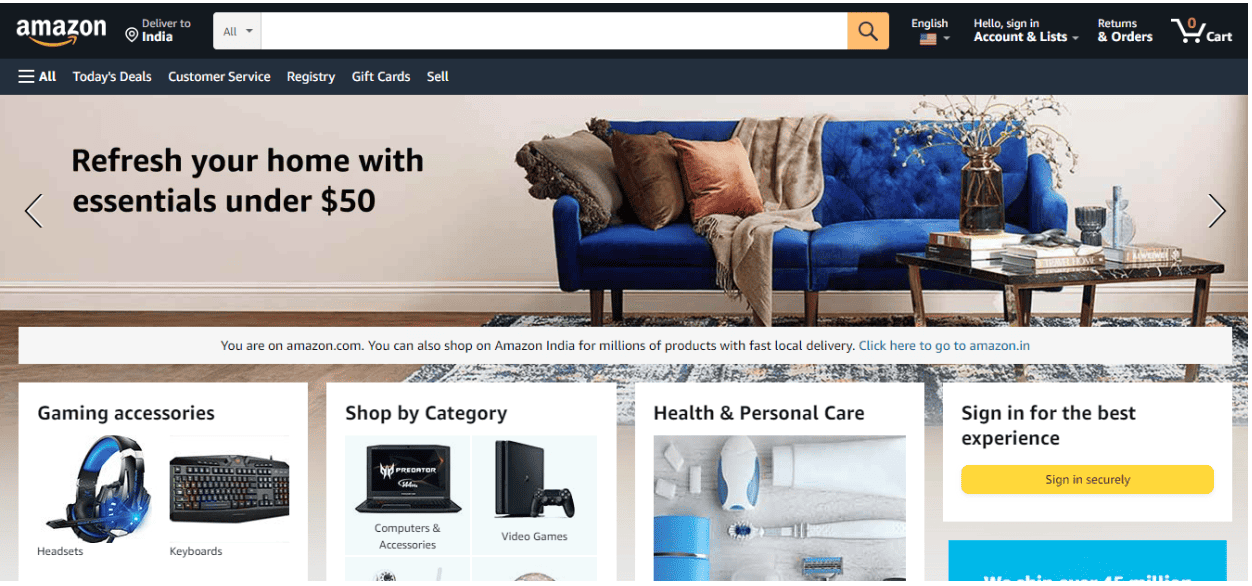
While Amazon originally started as an online bookstore, today, its operations have extended beyond it.
Through a product line extension, Amazon now sells all kinds of products and has vastly expanded its brand architecture. By using its brand name to extend its services, Amazon has ventured into company authority extension with a significant market share in cloud computing, online advertising, video and music streaming, and even artificial intelligence.
4. Mars: product line extension
Mars is an American confectionery manufacturer specializing in chocolates, pet food, and other products. Though mainly known for the iconic Mars chocolate, the brand extended its line through product line extension into ice cream bars, and chocolate spreads with the same taste as the candy bars.
Hence, people could now enjoy Mars in different ways, like chocolates, ice cream, and bread spreads.
5. Gillette Venus: customer base extension
Gillette is a US-based brand that primarily sells only safety razors and shaving products for men. Initially, the brand only catered as a skincare brand for men. But Gillette later introduced shaving products for women under the name ‘Gillette Venus.’
This is an excellent example of customer base extension as Gillette managed to expand its customer base by targeting the female demographic and creating shaving products customized to their needs.
6. Costa Coffee: product line extension
Costa Coffee is a British coffeehouse chain with stores around the world. The brand is synonymous with selling hot coffee of various kinds.
However, through a product line extension, the coffee brand expanded and diversified into energy drinks, milkshakes, and cold coffee. This helped it target customers who were always on the move and did not have the time to sit or wait in queues to get a fresh cup of coffee.
7. Titan: product line extension
Titan is an Indian company specializing in fashion accessories such as eyewear, watches, and jewelry. Initially known as Titan Watches Limited, the brand later diversified into selling eyewear, perfumes, bags, and wallets.
This is a form of product line extension since Titan focused on extending its parent product category into other types of fashion accessories.
8. Dettol: product line extension
Dettol is a UK-based disinfectant and antiseptic soap brand popular in India. It makes for one of the best brand extension examples — it has launched several disinfectant products within the same category.
Today, through a product line extension, Dettol has smartly extended its product line into handwash gel, bathing soap, hand sanitizer, liquid detergent, and floor cleaning liquid.
9. Red Bull: brand lifestyle extension, complementary product extension, licensing, and product line extension
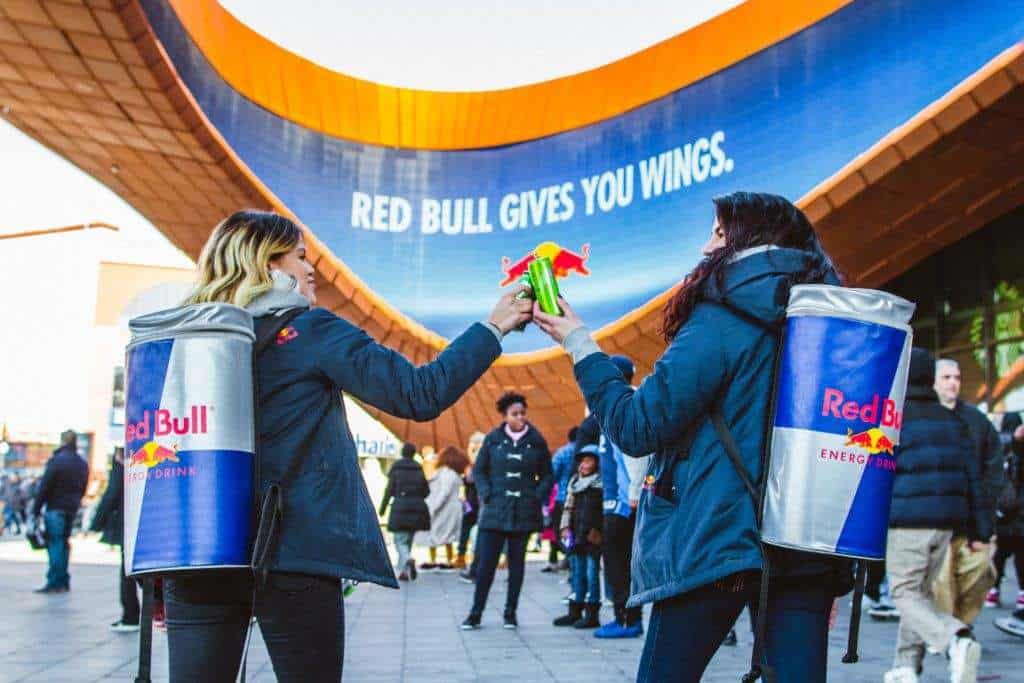
Red Bull is an Austrian company best known for its energy drinks. But they’ve taken their brand to exciting new heights!
Through a brand lifestyle extension, Red Bull sponsors extreme sports events like the Red Bull Air Race, creating an energetic image. They’ve also launched Red Bull Media House, producing adventurous content as a complementary product extension.
Red Bull’s licensing efforts have brought branded merchandise like apparel into the mix. And with a product line extension, they’ve introduced sugar-free and flavored energy drinks, ensuring there’s a Red Bull for everyone.
10. Google: company authority extension, product line extension, complementary product extension, licensing

Google started as a search engine, but now it’s so much more!
Through company authority extension, Google has ventured into cloud computing, smartphones, and smart home devices. They’ve extended their product line with services like Gmail, Google Maps, and Google Drive.
Google’s complementary product extension includes Google Home and Chromecast, enhancing the user experience. And finally, with licensing, Google’s Android powers millions of devices from various manufacturers.
Read also: Mastering Brand Storytelling: Strategies and Examples
5 Brand Extension Disasters and Why They Failed
In this section, we are unraveling some of the unsuccessful brand extensions, some by even famous brands, and how we can learn from their mistakes.
Not every brand extension strategy will be a sure hit; here are some significant failed brand extensions in marketing history.
1. Colgate and Kitchen Entrees
Whoever thought it was a good idea to pair the world’s famous toothpaste with food was wrong.
The idea behind this brand extension campaign was to introduce a ‘Colgate meal,’ an entree, after which you could brush your teeth with Colgate toothpaste.
What did they fail at and why?
They failed at a company authority extension. The issue with this brand extension idea was that people were reminded of eating toothpaste rather than the hot meal that was offered. This failed brand extension never left the USA, fairly so.
What is the lesson?
Stick to your niche, and do not venture out on uncharted waters without proper market research. Your product line extensions should always complement your brand association.

2. Levi’s Classic Suits
Introduced in the early 1980s, Levi, which already had a substantial share of the target market for casual, rugged clothing lines, sought to expand into a new style of market: Tailored suits.
Tailored suits were an emerging market, and Levi’s wanted to expand its brand through this niche and sustain its rapid growth rate. Not a bad idea at all, but here is why they failed.
What did they fail at and why?
They failed at a brand lifestyle extension. The core identity of Levi as a brand was rugged and outdoor casuals. This was in direct conflict with tailored classics on the opposite side of the spectrum.
The customers associate Levi’s with its durable line of clothing, which can be used for a rough, outdoorsy lifestyle. This made the tailored suits a failure.
What is the lesson?
Even though Levi’s was heading in the right direction by seeking to expand, the product introduced was in direct conflict with its core brand identity.
Consumers associated Levi’s with one section of clothing: durable, adventure-type clothes that would be ideal for rough and tough wear. Tailored suits were exactly the opposite; hence, it was a massive failure.

3. Arm & Hammer Underarm Spray
Arm & Hammer has successfully established a brand that is associated with a range of cleaning products, from laundry detergents to cat litter neutralizers. One product that did not hit the mark was the new product line of underarm deodorant spray.
This product line extension was a massive failure as the brand perception is associated with ‘heavy-duty’ cleaning products.
What did they fail at and why?
They failed at a product line extension. Arm & Hammer has a successful product line with a range of cleaning products. It is well-established in this niche. The issue here is a chemically heavy cleaning brand and a sensitive body part did not gel well.

Even the product packaging reminded customers of a chemically heavy cleaning product. It just did not deliver. This led to a failed brand extension.
What is the lesson?
Arm & Hammer, which is known for making excellent cleaning products, just did not hit the underarm deodorant market. The customers could not picture themselves using a product by a heavy-duty cleaning brand like Arm & Hammer.
When it comes to brand extension, it is key to stick to your core brand identity and move in the same direction.
Read also: Easy Crafts to Make and Sell: A Guide to Profitable DIY Projects
4. Pillsbury and Its Frozen Microwave Popcorn
This is a classic example of a great idea but poor execution. Pillsbury is a brand associated with a range of easy-to-make food products.
When they introduced frozen microwave popcorn as a new product line extension, it failed to compete with the likes of Orville Redenbacher and General Mill’s Pop Secret.
What did they fail at and why?
They failed at a product line extension. The product proposition of offering frozen popcorn did not seem valuable compared to other fresh popcorn alternatives offered by competitors.
Think about it—why would you have frozen popcorn when you can have fresh popcorn right off the bat? This reflects a misstep in brand management as the idea didn’t align well with consumer expectations and competitive offerings.

This frozen popcorn idea, if pre-positioned in a better way as an alternative to fresh popcorn, could have hit a chord with the audience.
What is the lesson?
The only thing missing in this brand extension campaign is, evidently, a lack of market research. They could have prevented this product line extension failure if they had adequate knowledge of the target market and studied their customers and competitors.
5. Instant Mashed Potatoes and Cadbury’s
Chocolates and mashed potatoes? A match made in disaster heaven!
Cadbury is known for its high-quality chocolate products. They started introducing low-end food products such as instant mashed potatoes as a brand extension strategy.

While this extension as an individual product line succeeded, the brand’s reputation for finer chocolate weakened.
What did they fail at and why?
They failed at a company authority extension. Even though the instant mashed potatoes were a commercial success, the main flagship chocolate products wavered. The reason was that the low quality of the food products got associated with Cadbury, making the brand lose credibility and trust.
What is the lesson?
If you are a brand known for high-quality products, it would be a huge mistake to introduce new products that are of low quality. Over time, brand recognition and credibility play a bigger role than short-term success.
The Connection Between Brand Equity and Brand Extension
Brand equity is the value that is associated with a brand name in the minds of a consumer. A company creates brand equity over time with products that are recognizable, memorable, and of higher quality, and the brand in itself is highly reliable and credible.
Brand equity is what differentiates a high-quality and established brand from a generic equivalent. The image below perfectly depicts what brand equity constitutes.

A company with higher brand equity will ensure that customers willingly pay a higher price for their products and trust the brand over the competitors.
Now, how is brand equity tied to brand extension?
The core of a brand extension strategy is to build on what is already a solid foundation. This means utilizing a company’s well-established brand equity to help expand the brand.
With a new product line extension, a brand relies heavily on customer loyalty with existing clients and brand identity for new clients. Both of which are part of brand equity.
According to a survey by Oberlo, 46% of consumers would pay more for brands they trust. Before extending your brand, it is important to establish brand equity and what the core of the brand is.
The next phase would be to analyze which part of the brand image is beneficial for the new product or service. Another key is understanding how the new product would add or subtract to the existing brand equity. Combine this with adequate market research and projections, and you will have a strong brand extension strategy.
Wrap Up
Brand extension helps businesses expand their clientele by introducing products and services that meet customers’ needs. These brand extension examples show how well-established companies use it to target a wider demographic and can either be related to or different from the parent product category.
Brand extension is an efficient marketing strategy, allowing companies to launch new products under the same brand name. It saves the trouble of spending money on branding and helps businesses grow their revenue further.
Additional content by Haripriya and Swastik Sahu.
